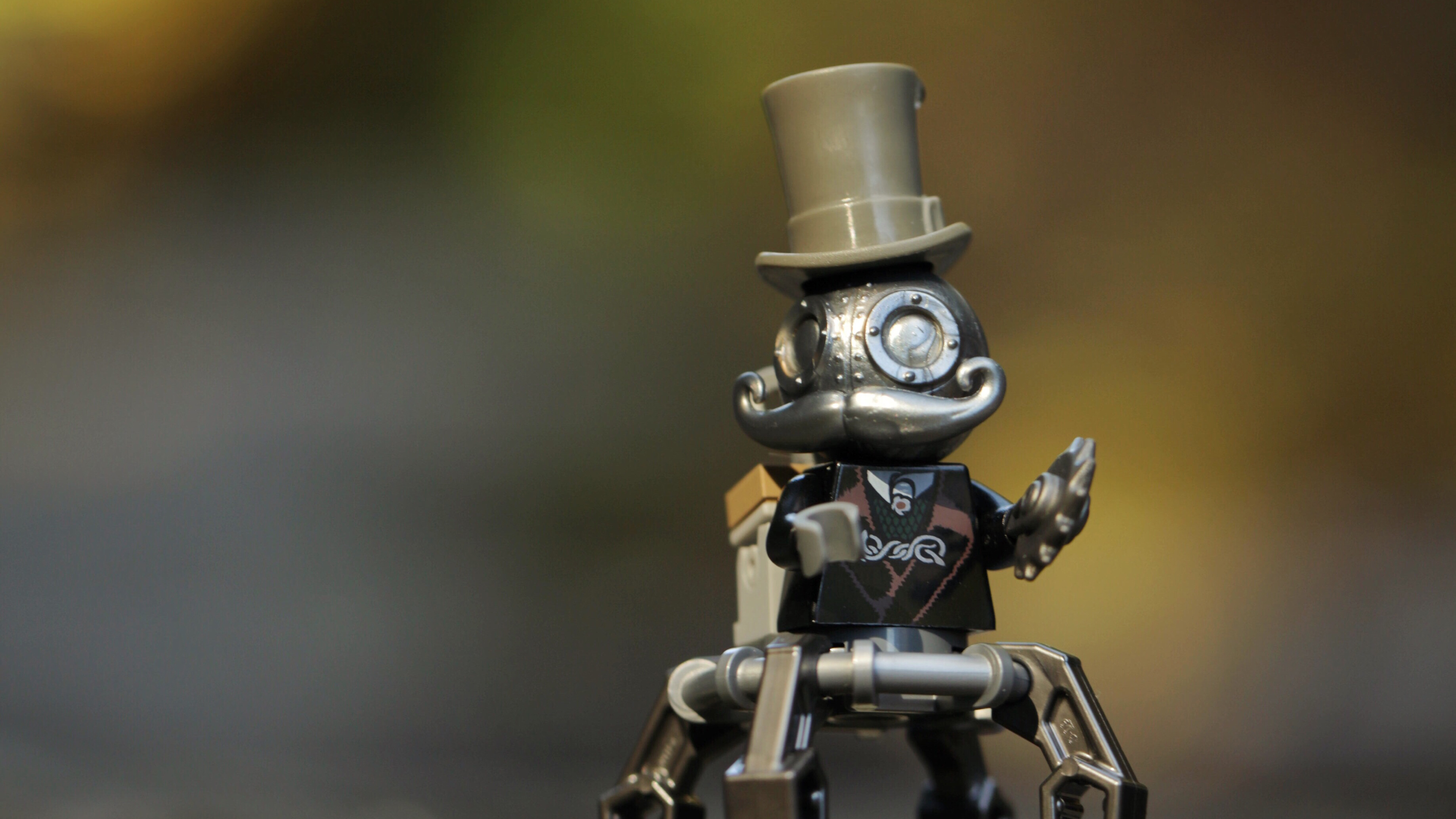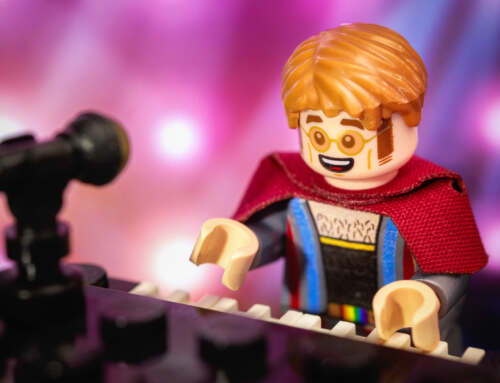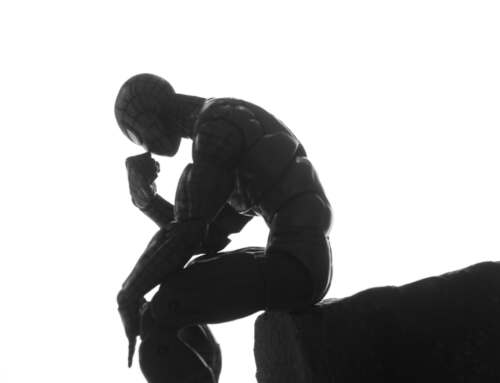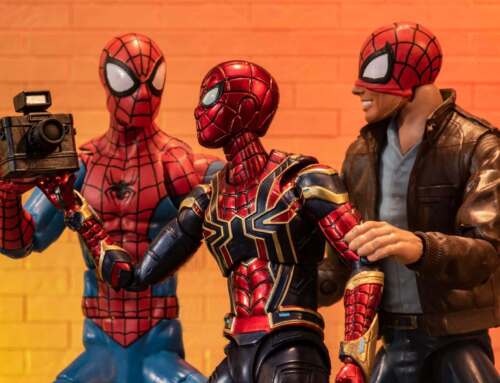It’s time for me to beat my favorite dead horse: metrics. I talked ages ago about The “Like” Trap and more recently The Problem with Metrics and I don’t feel any differently about any of it now. But Me2’s post yesterday on how he chooses his Little Book, plus events in my own life, compel me to revisit this issue.
We are all looking for some combination of validation, encouragement and feedback for our photography. Most of us enjoy sharing our photographs with family and friends; it is the rare person who is able to create work with the intent of keeping it private (Vivian Maier comes to mind, but even that example is debatable.).
The number of followers and the number of likes you receive for any photograph posted to social media only hints at how good (or bad) a photograph is. I think we are all aware that our follower numbers are padded with what is affectionately referred to as ghost followers. You know those accounts that are inactive, spam or people who are just plain lurking. That is why a simple like, or ratio, or any metric for that matter, is never enough to give you a clear view of the success of a photograph.
Personally, I think the best way to judge the quality of a photograph is sales. But considering that this is not a feasible method for most of us (myself included) to judge the success of a photograph, I look to comments as the next best indication that an image has connected with a viewer.
I am lucky that even when I post a rather questionable image, there are a few stalwart friends that I can count on for a positive response (thank you @goldnessie, @amwfotos, @dansolotoys and @darrencroft to name a few). But it is the other images, the ones that get 20-30 comments, those are the ones that I think are the most successful.
For example I published this image recently and the total “likes” was 500+, but there were 21 unique comments on the image; some from people I had not heard from before.
Versus this image with 900+ “likes” and 25 comments.
How do you tell which images is the better image through the social media lens of likes and followers? You can’t! But when you look to your comments you can get a sense of how well an image has connected with your viewers.
My point is, looking to metrics to solve the age old question of “what are my best images” is a continuously shifting target that isn’t worth your energy pursuing. The best images are the ones that speak to you, the ones that mean the most to you, the ones that you would hang on your wall with pride. No number, no metric, no outside validation can replace what you know in your heart of hearts, is a true reflection of you.
If you need outside validation, then look to your comments; look to your fans and what they’re saying. But really, the only person to know what are your best images, is you. This is not the easy way to choose a “best of” book, because making choices is hard, but in the end you will learn something from the process of choosing.
~ xxSJC
I don’t mean to come down harshly on Me2’s method, I know he was giving anyone who doesn’t know where to begin a few tools to get started. I only hope you will choose your best of images based on a criteria other than someone else’s view point.
Many of your are well on your way to finishing your “best of” book, how did you choose your images? Do you think that looking at your most liked images or did you do like I did and throw all the rules out the window before you even started?
Have you signed up for the best of 2015 challenge? There are only a couple of spots left, you don’t want to be left out!

“Mr. Steele” is my most liked photo ever; is this because of the photo or the subject? By the way, I didn’t even consider this image for my “best of” book. Not because I don’t like the image, but because i don’t think its better or worse than the ones I did choose.









Shelly, thank you for this most interesting post. Having chosen my twelve for a second time I could think about this subject a little longer (for about a year). I absolutely agree that there is no right neither a wrong way on how to select “only” twelve images. I admit I didn’t opt for metrics when picking the shots for my book. Yet I’m thankful for every (!) idea on how to. Even though Me2 went for likes and popularity the most important question to ask oneself when thinking about including a picture or rather not was his suggested third one: Does it speak to me?/ Do I feel strongly connected to it?
I put my focus mainly on these two questions (and an overall “Does this image work as an image or is it too edgy and not balanced?”). Still I do recommend asking at least one other human for their opinion. Sometimes we are too close to a topic and another view can be very helpful.
Am really, really looking forward to people’s choices. This may be very personal- and maybe that’s exactly something we all need a little more of.
Stefan
Stefan,
I completely agree that a second opinion is invaluable. I have my husband to give me a much needed reality check. I do get too close to my images and he keeps me grounded. You are so very correct when you say there is no right way. Whatever way works best for you is the best way, even if it is metrics or a some combination of personal tastes and likes. I look forward to seeing your latest book. I have a feeling it will be very different from last year!
Shelly
xo
This post feels so spot on for me. I’m pretty new to using Instagram for my toy photos but it’s obvious people tap the heart more than they comment. Although I get more comments than I do on Flickr! I am a long term Flickr user and over the last couple of years, it has become more and more obvious that people who used to comment have stopped and just hit like now. If they engage at all. I have far more views than likes these days. Maybe they just don’t like my photos now as they have changed from self portrait photos to toy photos (and hey, that’s okay) but the lack of engagement has really switched me off of Flickr as I get more interest on Instagram.
I ended up going with what I loved for my photo selection, rather than what was most popular. After all, it’s my ’12 of 2015′ and I want it to reflect what I got out of the year.
That was a bit ramble. The thoughts just got away from me a little. Thanks for the great post!
Lizzie,
It may have ben a ramble, but one I can appreciate. Yes I think Flickr has changed a lot over the past couple of years. I was never on there with toy photography during the hay day, but I find it a bit of a let down now. Although I have connected with a few people there I would never have found other wise, so that is awesome!
I look forward to exchanging books with you, it sounds like you choose your photos the same way I did!
Shelly
The secret sauce of metric algorithms 🙂
I will not argue that comments is another dimension to add to the mix. Most probably a very powerful fourth dimension to measure engagement (did you see number three), but if you are not one of those powerhouses that is engaging in #toypops to grow your audience and boost your likes or play the #tagging powergame to get more engagement, the likes of your online friends are a genuine measurement and a very good first start.
The reason why I would not put comments over genuine likes, is that comments can be misguiding when it comes to engagement, as a lesser picture with a clear call out for engagement or within a social context of engagement, may get more comments and traction than a truly awesome image that was just posted without a call for action or a social context that made it relevant at that time (I agree this argument can be used against likes as well, hence algorithms are not an easy science).
I fully agree with you it is not the only driver, and today I actually look more for “events” in my personal algorithm and individual feedback to make my selection, but the power of likes should not be underestimated for those who want to make a first cut in the wilderness of their own images.
Hugs,
Me2
Me2,
I agree with you that judging the quality of an image should be a mix of likes and comments. My two examples in this post were chosen because I had approximately the same number of followers and neither was part of a toy pops and neither had a call for action. I think they exemplify how two images can attract a wide range of interaction, be it likes or comments.
I’m so glad you liked the post and the conversation it is generating.
Shelly
xo
I think the difficulty here is what do we define “good”. Are the best pictures the most popular ones, the ones with highest quality, or the ones we prefer, or something else? Likes and comments both measure popularity and IMO popularity is not what should matter.
The only time when I find useful to work with these metrics is when I have two very similar pictures and I don’t know which one I prefer. It happened for one picture of my book. I tried to look on both Flickr and Instagram at the number of likes I had on the three versions I hesitated between. It happened that the metric on Flickr was saying the opposite than on Instagram.
I never really cared a lot about the number of likes I received, but since I joined Instagram in September my opinion about the usefulness of these numbers has fallen very low. I find it very hard to get a feedback relying on numbers because they are flawed. I think that even 500px’s pulse, which uses a complex algorithm to measure the amount of activity a picture get (and does it far better than what any human being can do), is flawed. In the end I think the best way to make our selection is to do it by relying upon our own feeling, not on numbers.
Reading back my comment I realized I said that “comments measure popularity”. And I want to add/clarify that I meant it for the number of comments. Obviously I do believe in the usefulness of individual comments. They give a useful qualitative feedback, but not a quantitative one.
I couldn’t agree with you more. As a photographer or artist we have to keep working against the siren’s song of metrics; their feedback can be so appealing in their simplicity! But in the end, the only opinion that matters is the artist’s; the creators. Although I will say that Stefan’s observation that having a second opinion (that you value) can be helpful. I have been known to get too attached to a particular image that has nothing to do with the quality of the image. I think we all run that risk and it’s hard to step back and view a favorite photo with an analytical eye, one that looks at composition, etc.
Always, thank you for joining the conversation Reiterlied!
I don’t know if I would go to the point of stating that the only opinion that matters is the creator’s but we surely shouldn’t be too much driven by the opinion of others.
Putting that aside I agree the opinion of someone else is often useful. That’s the reason why I originally started to put my photos online. On the other hand I regret that people often gives a positive feedback. While it feels reassuring, it does not help as much as a good critique does to improve our work.
I agree, sometimes a good critique is in order. I was contemplating taking some photo classes next year in hopes of getting just that. I want my work to get better and I don’t to put my friends in the awkward position on critiquing my work.
Shelly, Great post. I think about this quite a bit. I have a theory that the more one comments the more he/she receives comments…That makes sense – engage and be engaged. If that’s partly true, to use number of comments to measure quality may not be the whole story (as you have said too)…”That’s the greatest image in the world!”
Paul
Thank you and yes, I think you’re right; the more you engage on IG the more you will be engaged. But I think I am pretty consistent with my engagement, so as long as I am comparing apples to apples I think I’m safe. I wish there was some magic answer to how to tell the great from the merely good photographs, but there isn’t. I think ultimately you have to took at everything and then go with your gut. (Even then I am sure you will be wrong a certain percentage of the time. 😀 )
If you go with your gut as the final say, at least you won’t feel as if you sold out your opinion to crowdsourcing.
In other news, I miss shooting with you. We need to figure out a way to meet up sooner rather than later.
Shelly
Shelly,
A meet up is in order:) I’m in Spain in March, Missouri & Minnesota in June, here in NC in July…come visit!!!
Ha! This is going to be tough. I signed up for a photo tour of Iceland in 2017. I am saving my pennies until then. Maybe July when the kiddo is at camp. I will see how the summer shakes out. Safe travels until then! xo
There is one more factor that affects this thing, not present in Instagram but very much so in Flickr, and that is the number of views.
Comments are mostly genuine and sincere, but there are also those who are reaching for a favor in form of comment returned. It doesn’t make them false or dishonest, but they have an agenda which is sometimes quite evident or even direct. That makes it difficult to estimate their significance. It’s the level of engagement in the comments that matters, but it doesn’t translate to numbers. Same goes for the likes and faves.
This is a meter of a sort, of course, the numbers, fewer likes and comments is easily iterpreted as less success or quality that doesn’t appeal, and vice versa. But does that really measure the qualities of an individual image or rather the moment of the day, or your career as a toyphotographer, when you post it?
Furthermore, if you use something your audience knows, a franchise, in your photograph, it sort of distorts the equation. I mean, Star Wars is easier than Guy Fawkes, the significance of the photograph itself is shadowed by this. Steampunk, however, is not really a franchise but a genre, and it’s not seen in the official LEGO catalogue, so, it looks fresh and could attract viewers because of that. It could also be that the “Mr Steele” photo is simply bloody awesome!
I have found it interesting that in Flickr the number of views does not correlate with the number of comments or faves very well. My number one in Flickr is the same in all categories (views, faves and comments), it’s the only photograph that appears in all three of the categories. The rest of the top ten is very different in each category, there are only two images that show in two of them, everything else is all different photographs.
I’ve been a stats junkie back in the day, trying to figure out how this works. To this day, I haven’t found anything that would tell be a photo is a hit or miss before I post it, it’s always a surprise.
Would I use the numbers to determine which of my photos is the best? Well, my personal favourites aren’t necessarily the ones that are in the top ten of any of the three Flickr categories, nor the most liked on Instagram. I’d say I look at the stats, I try to hear and understand them, maybe even react to them, but what I hang on my wall at home has very little to do with that.
Yup, I couldn’t agree more. There is nothing in your response that I don’t completely agree with. Metrics can be fun to watch, but at the end of the day they are meaningless. And by meaningless I mean they are not repeatable. I know all of us strive to be the best photographers we can be and occasionally our work finds enough like minded people who agree. That’s why I hope when those who have signed up to do the “best of” photo books will trust in themselves to choose the best images and not look to metrics for the answer. Even when you get it “wrong” (which is of course subjective) you will learn something about yourself and your work through the process. Thanks for joining in the conversation my friend! 🙂
If I were to choose a “best of” (which I’m not going to do), I wouldn’t just choose the audience favorite but rather photos that captured key moments in my year — my last photo of the township in my old house, my first full-size modular MOC, the custom minifigs I made to commemorate my latest book, a photo from the month I spend each year in Portugal. Then again, I take photos primarily for myself and share them on Instagram with people who maybe enjoy them, the photography equivalent of people who self-publish not to be the next 50 Shades of Gray but to share their work with a small circle of family and friends.
Lyn,
You would create a book after my own heart; a book filled with memories and experiences. I have found that these books are richer for the thought that goes into them and memories you share with family and friends. This is the type of book I created last year through the images I chose. This year choose something different, but equally meaningful to me. I didn’t even conceive of using metrics to choose my images.
If you ever do make a book of your favorite images Lyn, let me know and we can swap books.
All my best to you,
Shelly
I used to think that “likes” didn’t matter, and that the creative process was it’s own reward. I’m not so sure now.
Not posting much through the summer means I’ve missed out when the community has moved on. People drop out, and new folks get involved. In the past I was often getting a good number of likes and I think I took it for granted, so it wasn’t important.
Now, getting less validation, makes me feel that images aren’t as good as they were. So hopefully it’ll encourage me to work that bit harder and get more involved ☺
Mike.
Ps: It’s the subject, my Studley arrived in the week, and he’s awesome
Mike,
You’re right the community is always in flux, people move one and new ones take their place. I find it helpful to follow most of the curatorial pages (BrickCentral, VitruvianBrix, ToyCrewbuddies, etc…) so I can see who is new and interesting. The field is ever evolving!
Personally I think the likes and general support of the community are important to stay motivated, both to keep shooting and to keep trying to do your best work. Likes are a wonderful motivator. I certainly would never say they don’t have their place in my complicated motivation equation.
I hope to see you more active and congrats on your purchase of the Mechtorian! I’m glad you like him too! I saw a painted one with a white Lego body on DoktorA’s Instagram feed and I feel a definite “need” to add to my collection. 😀
damn….
now I have no idea how to chose my pictures
I’m pretty sure you could just grab 12 random images and publish a stellar book! 😀